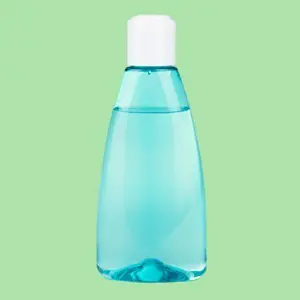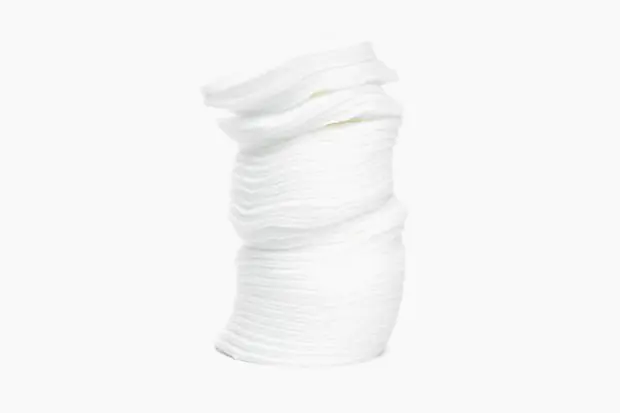When micellar water appeared on store shelves, many women breathed a sigh of relief: finally, a no-rinse product appeared! The light, transparent, odorless liquid easily removed makeup and cleaned pores without dryness, burning, or a feeling of heaviness or film. Ideal on the go, when the water is turned off and gives a feeling of control over the circumstances. The habit of rinsing your face still remains. When the liquid got into my eyes, an unpleasant burning sensation made me think that micellar water was not so harmless.
Let's go through the composition
In the advertisement, the conventional model of the active substance - a micelle - looked like a ball. However, in reality, three different types of substances can cleanse the skin. To guarantee deep cleansing, manufacturers do not use just one type of micelles, but combine them.
Active ingredients behave differently on the skin. It is because of the ingredients that there is a need to wash your face after cleansing. Look at the label on your product and prepare to be surprised.
Emulsifiers
These are already known substances PEG, PPG (PEG, PPG). They do an excellent job of removing impurities, liquefying and destroying compounds on the surface of the skin. The main advantage is the effective elimination of oily secretions from pores and cosmetics, dust and dirt. However, there are significant disadvantages:
- They disrupt the pH balance on the skin surface. They only work on the surface. Excessively dry skin and irritation.
To minimize the harmful effects of emulsifiers, solvent components are also placed in the jar, which cannot be left on the skin for a long time. It is this composition that requires mandatory rinsing. Tip for the attentive: look for Glycol compounds on the label (for example, Propylene Glycol, Butylene Glycol and others).
Surfactants (surfactants)
More delicate than PEG - they destroy sebaceous compounds, but do not come into contact with the epidermis. Therefore, they are conditionally safe. Cosmetologists advise rinsing off the remnants of a surfactant-based micellar solution.
If you forget to do this several times, the pH of the skin will not change. But repeated deviation can cause a reaction:
- dryness, flaking, less absorption of nutrients from creams and masks.
Poloxamers
The ingredients are designated as Poloxamer XXX, where XXX is a digital designation.
The effectiveness of different substances varies. Certain solutions are used in narrower areas (for impregnation of wet wipes, lotion for the skin of babies, etc.)
When forming the composition of a cleaning liquid, the purpose, efficiency and cost are taken into account. Therefore, most often you can find mixed micellar water; budget formulations are created based on PEG and solvents.
How to rinse off correctly?
Regardless of the manufacturer, it is advisable to remove any remaining product from the skin with water or tonic.
- If the skin is sensitive to rubbing or getting wet, then a tonic will help replace the water. The portion on a cotton pad should be generous in order to wash away all remaining salts and substances (at least 5 ml), and also restore skin balance. This option is also suitable in the absence of water. In all other cases, you can use ordinary water without additional means.
Review of popular micellar formulations
Let's check the composition of bottles from different manufacturers for the cleaning components described above.
Pharmacy brands
- Avene Cleanance micellar water, Bioderma Sensibio H2O, Librederm and La Roche Posay ULTRA sensitive contain PEG-6 Caprylic/Capric Glycer > Avene brand combines it with BUTYLENE GLYCOL and PENTYLENE GLYCOL, Bioderma with Propylene Glycol, and La Roche Posay with PEG-7 and poloxamers. Librederm is a conventionally pharmaceutical brand that uses only PEG-6 as micelles.
Popular cosmetic brands Garnier and Bourjois use Poloxamer 184 in their micellar formulations.
- only Garnier uses Hexylene Glycol in its composition, and its competitor also uses PEG-7 glyceryl cocoate, Coco-Glucoside, Propylene glycol.
Budget brands are also not original. Most of them contain PEG, a perfume or fragrance.
Cosmetologists attach great importance to which part of the list the aggressive ingredient is located in. If at the very beginning, then its concentration is higher.
However, more expensive products contain more moisturizing and softening additives. This is important for girls and women with sensitive skin. But everyone will have to wash off the micellar.
So, we are convinced that all products contain 2-3 types of active substances, and, therefore, require rinsing after cleansing the face.
What are the advantages of such cosmetics?
Micellar water easily copes with both daily secretions from the skin itself and long-lasting makeup. One bottle can easily replace several products.
To remove stubborn makeup, simply apply a cotton pad soaked in liquid for a while.
Minimum number of movements with good efficiency!
The combination of components does not cause unpleasant sensations and gently cleanses sensitive and combination skin (unlike a number of lotions). And this option is more gentle than soap or gels for the delicate skin around the eyes.
Micellar water is another product that clearly shows that it is not the cost of cosmetics that is important, but its composition and proper use. Remember this when choosing your care products for the beauty and health of your skin!
First, a little theory. Micelles are a special type of particle that can consist of a variety of substances. They have one thing in common: each micelle consists of a hydrophilic (water-soluble) head and a hydrophobic tail. These tails are attracted to each other and to various oils, and this property allows you to wash off makeup with micellar water: the tails simply pick it up from the surface of the skin. We asked cosmetologists whether it is necessary to wash off the micelles remaining on the face with water or if nothing will happen if this is neglected.

Natalya Fursa, cosmetologist-esthetician Buro Beauty:
“Micellar water is an indispensable product for very sensitive skin that does not tolerate washing with water. Micelles remove impurities from the surface of the skin without irritating it. Micellar water is suitable for cleansing in any conditions, even when traveling. Manufacturers claim that micellar water does not need to be rinsed off. But if a person feels discomfort after using it, then it is better to wash your face - unless you have too sensitive skin.”

Natalya Tkachenko, dermatocosmetologist at the OblakaStudio beauty salon:
“There is no need to rinse off micellar water. Conventional cleansers are a collection of ingredients that remove oil- and water-soluble substances. And micellar water simply picks up dirt particles and they remain on the cotton pad. With its help you can remove any impurities from the face, neck and décolleté. After such a wash, you don’t even need to use lotion or toner: the lipid barrier of the skin is not disturbed, and the pH level remains the same.”

Kamila Mursalova, dermatocosmetologist at the Prive 7 Beauty & Sport beauty center:
“Micellar water has recently become the most popular facial cleanser. Does it need to be washed off? Yes, if the composition includes surfactants (surfactants). These include, for example, amino acids, soap, and alcohol. This is due to the fact that with constant contact of micellar water with the skin of the face, the barrier function of the epidermis may be impaired. And this, in turn, can lead to dryness, redness and flaking. If your micellar water contains nothing but H₂O and plant extracts, then there is no need to rinse off such water.”
Why a popular makeup remover cannot be a complete cleanser


Answers to most of our questions We are used to searching online. In a new series of materials, we ask exactly these questions: burning, unexpected or common ones - to professionals in a variety of fields.

We always emphasize that micellar water must be washed off: even if the bottle says that the product can be left on the skin, most likely this recommendation should not be trusted unconditionally. To fully understand this issue, we learned from a cosmetologist how to properly use products with micellar water and what to do for those who avoid frequent contact with tap water.
Irina Churikova
dermatocosmetologist, head of the training center of the National Beauty Company
Micellar water is a product containing surfactants, surfactants, like any other cleansing product. In micellar, however, surfactants are combined into micelles, or spheres of molecules: this structure allows them to attract surface skin contaminants, dust, smog contained in the air, decorative cosmetics and fat, but be less aggressive to the skin. Micellar water is designed to gently cleanse the skin of such surface impurities and, due to the selection of substances and their concentration, acts “softer” than conventional washing products, but it cannot replace all other products. The collected impurities will remain on the skin, if you don’t wash your face - the main amount will settle on the cotton pad, but it will be difficult for it to collect everything clean.
Any cleansing involves contact with water - it should be avoided primarily by those who have diseases and skin characteristics, but in this case you need to consult a specialist and select an individual care regimen. For those with sensitive skin, it is better to choose products with a low pH (that is, high acidity) - then the process will be “softer”.
The impurities collected by the micelles will remain on the skin, if you don’t wash your face - the main amount will settle on the cotton pad, but it will be difficult for it to collect everything clean.
During the day, a lipid barrier is developed on the skin, but upon contact with water, we wash it off, and it can be restored no earlier than in a day. Ceramides can help - they are found in products that perform a protective function, such as moisturizer, but you can also find them in cleansers like milk, cream or foam. The most common natural ceramides are oils; they additionally soften the skin and relieve irritation.
If hypersensitive skin reacts to tap water, sometimes leaving micellar water on the surface of the skin is acceptable. But then the cleansing procedure should be repeated many times until the cotton pads with which we apply the product become perfectly white. The process will take longer, but at least there will be less dirt on the skin.



